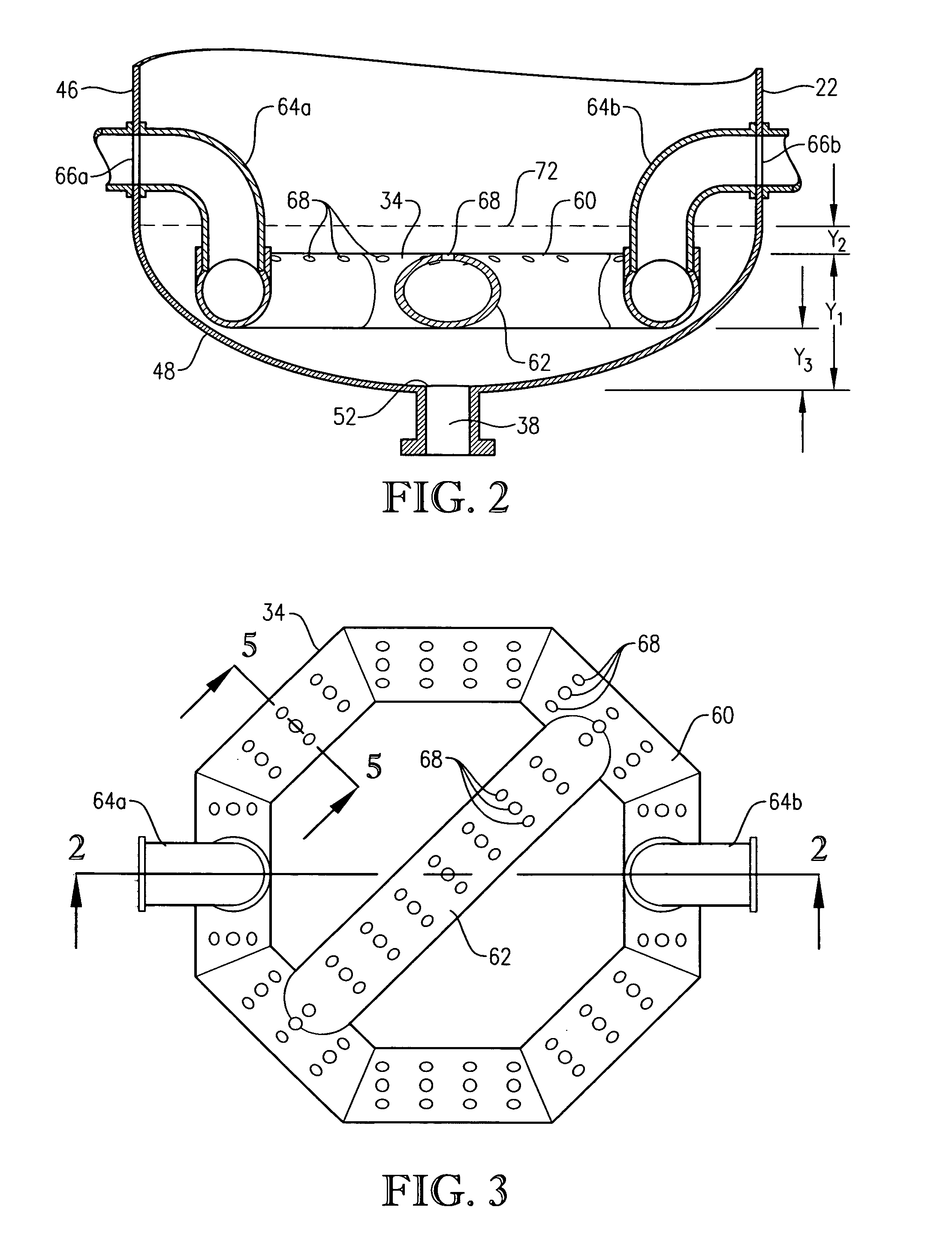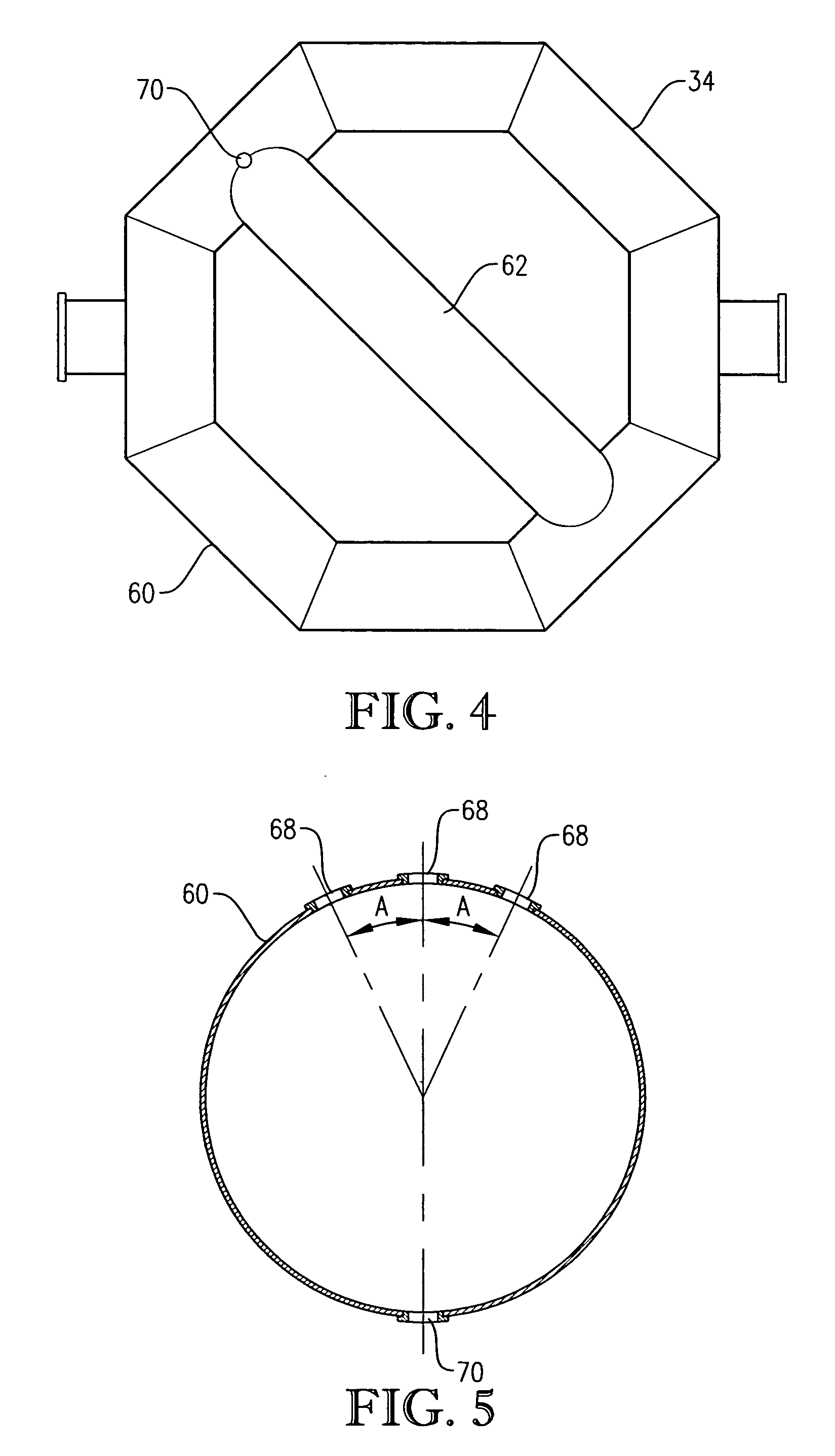Optimized liquid-phase oxidation
a technology of aromatic compound and liquid phase, which is applied in the preparation of carboxylic compounds, lighting and heating apparatus, furnaces, etc., can solve the problems of unfavorable oxidation rate, high capital cost of cstrs, and inability to achieve oxidation speed
- Summary
- Abstract
- Description
- Claims
- Application Information
AI Technical Summary
Benefits of technology
Problems solved by technology
Method used
Image
Examples
examples 1-10
[0339] Example 1 is a calculated example of a bubble column oxidation reactor for oxidizing para-xylene in a liquid phase of a three-phase reaction medium. The bubble column reactor of Example 1 represents a proven industrial design with a para-xylene feed rate of 7,000 kilograms per hour. Examples 2 through 10 are calculated examples for bubble column oxidation reactors having operating capacities 7 times greater than the reactor of Example 1. FIG. 59 provides a table outlining the different parameters of the bubble column oxidation reactor that are varied in Examples 1-10.
example 1
[0340] This example employs a bubble column reaction vessel having a vertical, cylindrical section with an inside diameter equaling 2.44 meters. The height of the cylindrical section is 32 meters from the lower tangent line (TL) to the upper TL of the cylindrical section. The vessel is fitted with 2:1 elliptical heads at the top and bottom of the cylindrical section. The height from the bottom of the reaction medium to the top of the cylindrical section is about 32.6 meters, and the overall height of the reaction vessel is about 33.2 meters. The operating level is about 25.6 meters above the bottom of the reaction medium.
[0341] Para-xylene is fed to the reactor at a steady rate of 7,000 kilograms per hour. A filtrate solvent comprising primarily acetic acid is fed intimately commingled with the para-xylene at a steady rate of 70,000 kilograms per hour. The feed is distributed within the reaction vessel near an elevation of 2 meters above the bottom of the reaction medium using a ho...
example 2
[0345] In this example, the bubble column reactor is fed para-xylene at an increased rate of 49,000 kilograms per hour-7 times greater than in Example 1. The superficial gas velocity, often considered an important scale-up variable for bubble columns, is kept approximately equal to Example 1 by increasing the cross-sectional area of the reaction vessel to be about 7 times larger than in Example 1. The H:W and L:D ratios, often considered important scale-up variables for bubble columns, are also kept approximately equal to Example 1.
[0346] The other feed flows are increased with the same 7:1 ratio to Example 1. The compositions of the feeds are the same as in Example 1, providing the same concentrations of water, cobalt, bromine and manganese within the liquid phase of the reaction medium as in Example 1. The operating pressure of the reaction vessel overhead gas is again 0.52 megapascal gauge, and the operating temperature is again about 160° C. measured near the mid-elevation of t...
PUM
| Property | Measurement | Unit |
|---|---|---|
| temperature | aaaaa | aaaaa |
| temperature | aaaaa | aaaaa |
| temperature | aaaaa | aaaaa |
Abstract
Description
Claims
Application Information
 Login to View More
Login to View More - R&D
- Intellectual Property
- Life Sciences
- Materials
- Tech Scout
- Unparalleled Data Quality
- Higher Quality Content
- 60% Fewer Hallucinations
Browse by: Latest US Patents, China's latest patents, Technical Efficacy Thesaurus, Application Domain, Technology Topic, Popular Technical Reports.
© 2025 PatSnap. All rights reserved.Legal|Privacy policy|Modern Slavery Act Transparency Statement|Sitemap|About US| Contact US: help@patsnap.com



